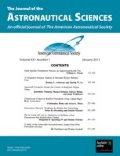“I regard it as an inelegance, or imperfection, in quaternions, or rather in the state to which it has been hitherto unfolded, whenever it becomes or seems to become necessary to have recourse to x, y, z, etc.” William Rowan Hamilton (quoted in a letter from Tait to Cayley)
“Quaternions came from Hamilton after his really good work had been done; and, though beautifully ingenious, have been an unmixed evil to those who have touched them in any way, including Clerk Maxwell.” William Thomson, first baron Kelvin, 1892
“…quaternions appear to exude an air of nineteenth century decay, as a rather unsuccessful species in the struggle-for-life of mathematical ideas. Mathematicians, admittedly, still keep a warm place in their hearts for the remarkable algebraic properties of quaternions but, alas, such enthusiasm means little to the harder-headed physical scientist.” Simon L. Altmann, 1986 [1]
Abstract
Some of the confusions concerning quaternions as they are employed in spacecraft attitude work are discussed. The order of quaternion multiplication is discussed in terms of its historical development and its consequences for the quaternion imaginaries. The different formulations for the quaternions are also contrasted. It is shown that the three Hamilton imaginaries cannot be interpreted as the basis of the vector space of physical vectors but only as constant numerical column vectors, the autorepresentation of a physical basis.
Similar content being viewed by others
References
ALTMANN, S. L. Rotations, Quaternions, and Double Groups, Oxford, Oxford University Press, 1986.
SHUSTER, M. D. “A Survey of Attitude Representations,” The Journal of the Astronautical Sciences, Vol. 41, No. 4, October–December 1993, pp. 439–517.
KUIPERS, J. B. Quaternions and Rotation Sequences, Princeton, Princeton University Press, 1999.
EULER, L. “Problema Algebraicum ob Affectiones Prorsus Singulares Memorabile,” Novi Commentari Academiae Scientiarum Imperialis Petropolitanae, Vol. 15, 1770, pp. 75–106.
EULER, L. “Nova Methodus Motum Corporum Rigidorum Determinandi,” Novi Commentari Academiae Scientiarum Imperialis Petropolitanae, Vol. 20, 1775, pp. 208–238, also Leonhardi Euleri Opera Omnia, Series Secunda, Opera Mechanica Et Astronomica, Basel, 1968, Vol. 9, pp. 99-125.
RODRIGUES, O. “Des lois géométriques qui régissent les déplacements d’un système solide dans l’espace, et de la variation des coordonnées provenant de ses déplacements consideéerés indépendamment des causes qui peuvent les produire,” Journal des Mathématiques Pures et Appliquées, Vol. 5, 1840, pp. 380–440.
GIBBS, J.W. Vector Analysis, E. B. Wilson, ed., New York, Scribners, 1901.
HAMILTON, W. R. “On Quaternions; or a New System of Imaginaries in Algebra,” Philosophical Magazine, Vol. 25, 1844, pp. 489–495.
SHUSTER, M. D. “Attitude Analysis in Flatland: the Plane Truth,” The Journal of the Astronautical Sciences, Vol. 52, Nos. 1 and 2, January–June 2004, pp. 195–209.
CAYLEY, A. “On the Motion of Rotation of a Solid Body,” Cambridge Mathematics Journal, Vol. 3, 1843, pp. 224–232.
CAYLEY, A. “Recherches sur les Matrices dont les termes sont des fonctions linéaires d’une seule Indeterminée,” Journal für die reine und angewandte Mathematik, Berlin, Crelle, 1855, pp. 313–317.
CAYLEY, A. “Memoire on the Theory of Matrices,” Philosophical Transactions 1, Vol. CXLVIII, 1858, pp. 17–37.
CAYLEY, A. “On Certain Results Relating to Quaternions,” Philosophical Magazine, Vol. 26, 1845, pp. 141–145.
HAMILTON, W. R. Elements of Quaternions, London, Longmans, Green & Co., 1866.
GIBBS, J.W. Scientific Papers, Vol. II, New York, Dover, 1961.
HEAVISIDE, O. Electromagnetic Theory, London, 1893 (Vol. 1), 1899 (Vol. 2), 1912 (Vol. 3).
CROWE, M. J. A History of Vector Analysis, New York, Dover, 1967.
VAN DER WAERDEN, B. L. A History of Algebra, New York and Berlin, Springer Scientific + Business Media, 1985.
WERTZ, J. R. (ed.) Spacecraft Attitude Determination and Control, New York and Berlin, Springer Science + Business Media, 1978.
SHUSTER, M. D. “The Youngest Quadrant,” in “In My Estimation,” The Journal of the Astronautical Sciences, Vol. 54, Nos. 3–4, July–December 2006, pp. 273–297.
FALLON, L. S. III “Quaternions,” Appendix D in J. R. Wertz (ed.), op. cit., pp. 758–59.
MARKLEY, F. L. “Parameterization of the Attitude,” Section 12.1 in J. R. Wertz (ed), op. cit., pp. 410–420.
WIE, B. Space Vehicle Dynamics and Control, Reston, Virginia, American Institute of Aeronautics and Astronautics, 2008.
SCHAUB, H. and JUNKINS, J. L. Analytical Mechanics of Space Systems, Reston, Virginia, American Institute of Aeronautics and Astronautics, 2003.
CRASSIDIS, J. L. and JUNKINS, J. L. Optimal Estimation of Dynamic Systems, Boca Raton, Florida, Chapman and Hall/CRC, 2004.
SHUSTER, M. D. and DELLINGER, W. Chapter 5, “Spacecraft Attitude Determination and Control,” in PISCANE, V. L. (ed.), Fundamentals of Space Systems, Oxford, Oxford University Press, 2005, pp. 236–325.
HUGHES, P. C. Spacecraft Attitude Dynamics, New York, John Wiley & Sons, 1986; reprint: Mineola, New York, Dover Publications, 2004.
HAMILTON, W. R. Lectures on Quaternions, Dublin, Hodges & Smith, 1853.
CAYLEY, A. “Coordinates versus Quaternions,” Proceedings of the Royal Society of Edinburgh, Vol. 20, 1893–1894 session (published 1895), pp. 271–275.
TAIT, P. G. “On the Intrinsic Nature of the Quaternion,” Proceedings of the Royal Society of Edinburgh, Vol. 20, 1893–1894 session (published 1895), pp. 276–284.
HESTENES, D. New Foundations for Classical Mechanics, second edition, New York and Berlin, Springer Scientific + Business Media, 1999.
Author information
Authors and Affiliations
Corresponding author
Additional information
An erratum to this article is available at http://dx.doi.org/10.1007/BF03256568.
Rights and permissions
About this article
Cite this article
Shuster, M.D. The nature of the quaternion. J of Astronaut Sci 56, 359–373 (2008). https://doi.org/10.1007/BF03256558
Published:
Issue Date:
DOI: https://doi.org/10.1007/BF03256558




